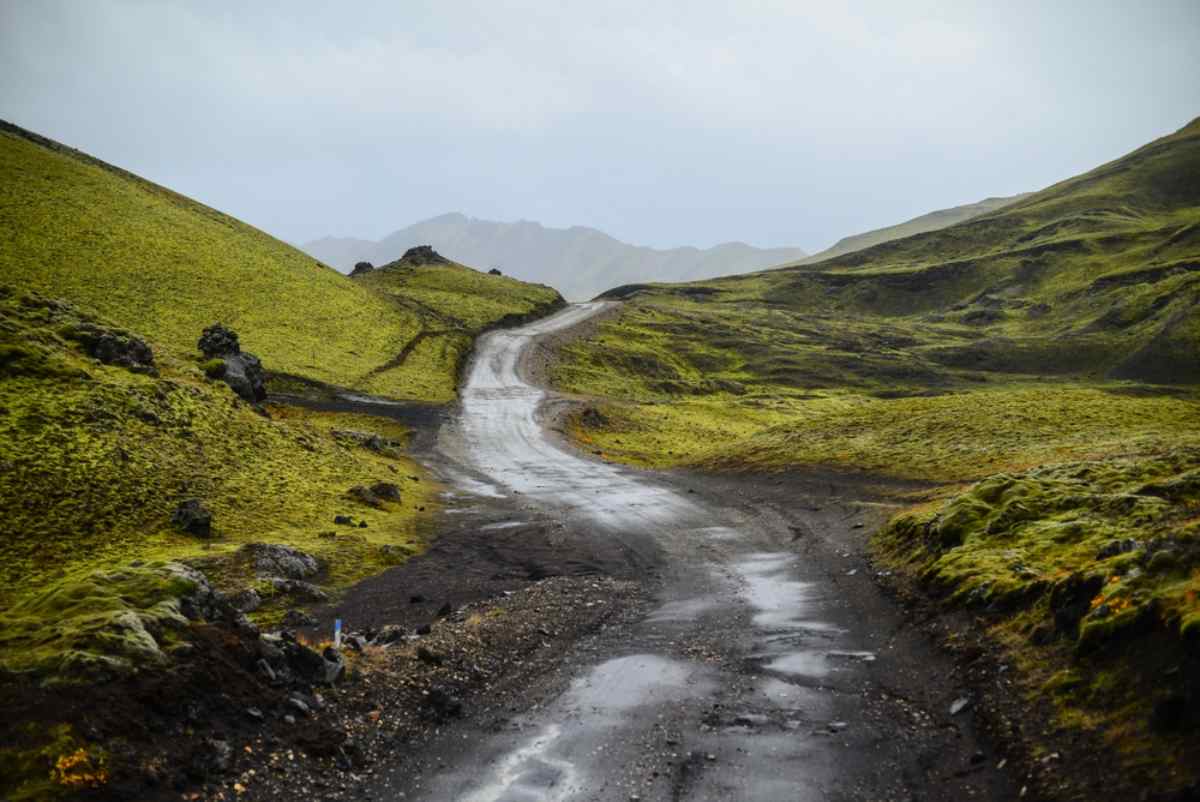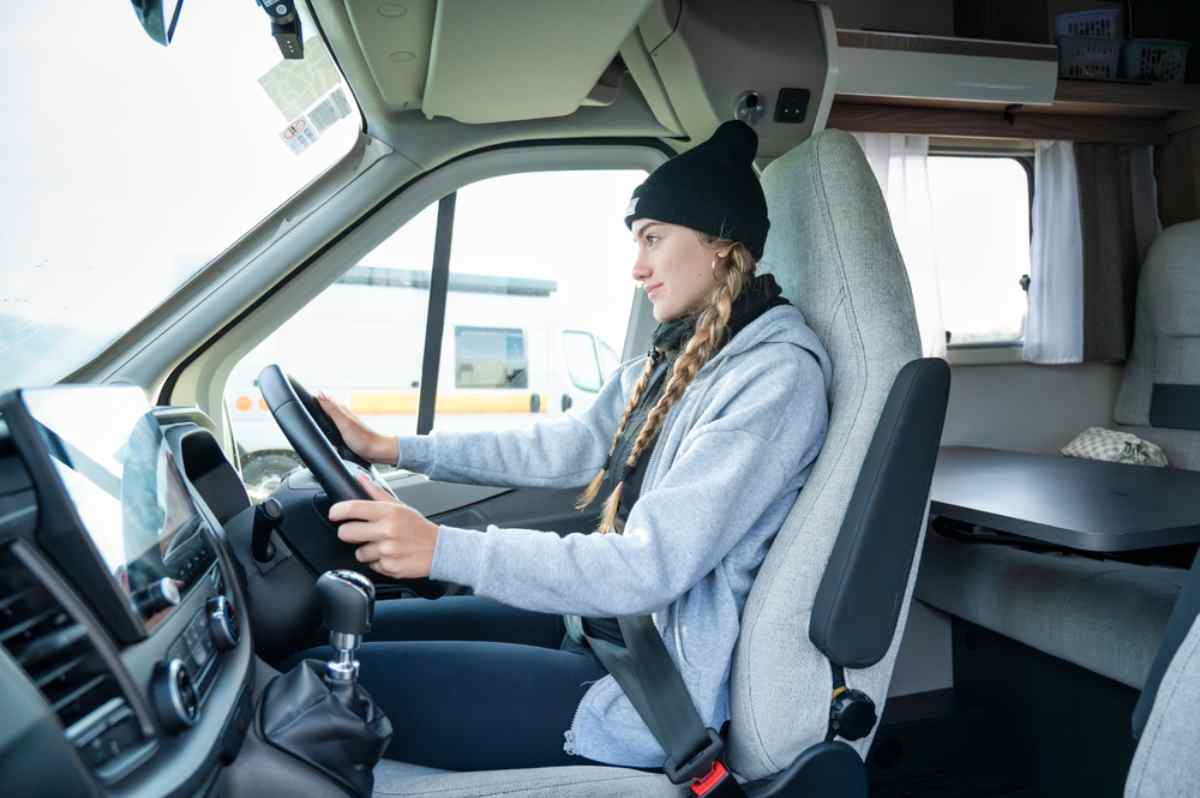Driving in Iceland isn’t a Sunday cruise. The road conditions in Iceland decide whether your trip feels like freedom or survival training. One stretch is smooth and calm, the next kicks up gravel or hides ice under fog.
This 2025 guide breaks it down for real: paved routes, F-roads, and the seasons that keep locals guessing. You’ll see what to drive, when to go, and how to read the land before it turns on you.
Every word is grounded in facts from trusted sources and our own personal knowledge.
An Overview of Driving in Iceland
Roughly 35% of Iceland’s roads are paved. These include the main routes like the Ring Road, where most of the country’s traffic happens. The other 65%? Unpaved, uneven, and often unforgiving.
Icelandic driving conditions shift fast depending on where you go. In towns and along the south coast, you’ll find smoother surfaces. Step into the rural interior, and it’s a different story. Iceland’s gravel roads dominate and demand lower speeds, tighter focus, and actual respect for the terrain. Then you’ve got the F-roads. These are mountain tracks, open only in summer, and even then only to 4x4 vehicles with enough clearance and grit.
They’re unpaved, often cross rivers, and offer zero help if you get stuck. Winter closes them entirely. So while the map might tempt you with shortcuts or scenic detours, always ensure they are paved or that you have the right vehicle to handle the terrain.
The Ring Road and Main Paved Roads
The Ring Road, or Route 1, is Iceland’s main lifeline. It loops around the country for 1,322 kilometers (821 miles), connecting Reykjavík, Akureyri, Egilsstaðir, Höfn, and Vík. Ring Road conditions in Iceland are stable most of the year, with fast snow clearing and traction treatments when needed. Still, ‘open’ can flip to ‘closed’ overnight if the weather turns. This isn’t the place to gamble on forecasts.

The road gives access to Iceland’s greatest sight. Glaciers. Waterfalls. Lava fields. Black sand beaches. But don’t let the name fool you. This isn’t a highway built for cruise control. The lanes are narrow. Shoulders are often nonexistent. Blind corners demand more focus than speed.
Ring Road 2, also called the Westfjords Way, officially opened in 2020. It includes a new tunnel through the Hrafnseyrarheiði mountain pass and gives paved access to one of Iceland’s most remote regions. For other detours, paved side routes like the Golden Circle and Snæfellsnes Peninsula offer reliable options.
Gravel Roads and F-Roads in the Highlands
Not all gravel is created equal in Iceland. Some roads lead calmly to farms, campsites, or scenic lookouts. Others will try to chew up your rental and strand you mid-river. Rural gravel roads are manageable with slow driving and some caution. But Iceland’s F-roads are a different species.
These are rough mountain tracks marked with an ‘F’ and open only from mid-June to early September, if conditions allow. F-roads demand high-clearance 4x4 vehicles and a different kind of mindset.
You’ll face loose rock, deep ruts, blind curves, and glacial river crossings with no bridges in sight. Regular insurance won’t cover it. You’ll need specific coverage for F-roads or risk paying out of pocket.

Before you even think about heading inland, check live road status on the Icelandic Road and Coastal Administration website. Ignore a closure and you’ll find ranger checkpoints waiting, or worse, fines for illegal access.
Driving off-road is illegal for a reason. It wrecks fragile moss fields and lava formations that took centuries to form. If you want smooth, stick to the paved routes. If you want a challenge, bring the right gear, the right camper, and a full tank of respect. F-roads do not forgive unprepared drivers.
Road Conditions by Season
If you plan to rent a camper in Iceland, timing is everything. Here’s what you need to watch for, season by season.
Summer - Easiest Driving
Summer in Iceland feels like the island loosens its grip. Roads are open. The skies stay bright past midnight. You can actually see where you’re going. Dry tarmac, decent grip, and road conditions in Iceland that finally cut you some slack.
But don’t relax too hard. Tourists stop dead in the road for sheep selfies. Gravel dust kicks up like smoke. One wrong bend and you’re in a cloud with no exit. The Ring Road behaves, mostly. So do the paved detours. But the weather still does what it wants. That’s the part people forget. July doesn’t guarantee anything.
So yeah, summer is easier. Just not idiot-proof. Keep both hands on the wheel, eyes ahead, and maybe pull over before you take that waterfall shot. You’ll thank yourself later. Or at least your rental company will.
Autumn & Spring - Transition Months
Autumn and spring don’t make promises. One hour it’s clear skies; the next, you’re skating over black ice with the wind howling sideways. These are Iceland’s wildcard seasons, where sleet, sun, and fog take turns without warning. Mountain passes shut down with zero apology. Plans fall apart.
This is where 4x4 driving in Iceland starts to make sense. A mid-size 4x4 camper like the VW California gives you the clearance and grip you didn’t know you needed until the road tilts icy or a back route turns slick. Even paved roads get sketchy fast.
You’ll need flexibility. It’s not just about where you’re going, but when the road decides to let you. Travel times stretch. Routes change. If you’re glued to an itinerary, you’re gonna lose.
Check conditions. Then check again two hours later. That’s the game. It’s not impossible. It just demands more patience than summer and a little more respect than most travelers bring.

Winter - Snow, Ice, Storms
Winter driving in Iceland is no joke. The days are short (like 5 hours only in December), the roads are frozen, and the wind hits hard enough to push your car sideways. Snow covers everything. Black ice hides under tire tracks. Visibility drops fast, sometimes to nothing. You need winter tires or studded ones, which we fit free of charge.
Some areas just disappear for the season. The Eastfjords and Westfjords often shut down when storms roll in. Locals cancel plans. Tourists get stuck. Red alerts mean exactly what they sound like. Blizzards. Whiteouts. Wind that makes opening your door a struggle.
This isn’t the time to wing it. Driving too fast, ignoring warnings, or assuming it will be fine is how things go sideways. Literally. Real preparation means slowing down, checking the forecast hourly, and knowing when to call it a day.
Even pros pull back when winter tightens its grip. If they stop driving, you probably should too.
Weather Comparison Table
|
Season |
Conditions |
Risks |
Vehicle Advice |
|
Summer |
Dry roads, long daylight (up to 24 hrs in the north), most routes open |
Tourists stopping mid-road, gravel dust, sudden weather shifts |
2WD fine for most areas |
|
Autumn & Spring |
Unpredictable mix of sun, sleet, wind, and ice. Mountain passes often close temporarily |
Black ice, sudden closures, changing road surfaces |
Mid-size 4x4 highly recommended |
|
Winter |
Icy roads, snow cover, 5-hour daylight in December, red weather alerts common |
Blizzards, whiteouts, closed regions (e.g., Eastfjords, Westfjords), strong crosswinds |
4x4 with studded or winter tires required |
Speed Limits and Traffic Rules in Iceland
Iceland’s speed limits are strictly enforced. The cops don’t chase. They just mail the fine and let your rental company do the rest.
Here’s the breakdown:
- 90 km/h (56 mph) on paved rural roads
- 80 km/h (50 mph) on gravel roads
- 50 km/h (31 mph) in towns
That’s if the weather behaves, which it won’t.
All signs are in metric. No miles. No reminders. Miss one, and a speed camera will catch you. Your rental company will happily charge your card without warning.
Need a reference?
- 26 km/h (16 mph) over in a 30 zone = 23,500 ISK (about $175)
- 41 km/h (25 mph) over in a 90 zone = 80,000 ISK (roughly $600)
Seatbelts? Non-negotiable. Headlights? Always on. Phones? Only hands-free.

Watch for one-lane bridges, blind hills, and sheep that don’t care you’re on vacation. If you want a photo, use a pull-out. Don’t park in the middle of someone else’s life.
Essential Tips for Driving Safely in Iceland
Iceland rewards drivers who stay alert and plan ahead. Here’s how to do both without learning the hard way:
- Check conditions daily using Iceland road.is (Vegagerðin) for closures and Vedur.is for weather. Morning and evening. No exceptions.
- Download these apps: 112 Iceland (for emergencies) and SafeTravel.is for alerts, wind warnings, and storm updates.
- Add buffer days to your itinerary. Delays are common.
- Pick the right insurance. You want coverage for gravel, sand, wind, and river damage. Read the fine print.
- Drive fewer kilometers per day than you think. Roads are slower, views are distracting, and the weather plays dirty.
- Avoid night driving if possible, especially in autumn and spring. Darkness plus fog or black ice is not a fun mix.
Quick Driver Checklist
Iceland’s road safety starts before you even turn the key. Use this checklist to make sure you’re not gambling with weather, terrain, or your rental deposit. Screenshot it, print it, whatever works. Just don’t skip it.
|
Quick Driver Checklist |
What to Look For |
|
Vehicle type matches route |
2WD works for summer on the Ring Road. 4x4 is essential for winter or F-roads. |
|
Tires are season-appropriate |
Winter or studded tires from Nov to mid-April. Check condition and pressure. |
|
Emergency gear is packed |
Flashlight, blanket, shovel, jumper cables, snacks, water, power bank. |
|
Road and weather apps installed |
Road.is, Vedur.is, SafeTravel, 112 Iceland. Offline maps as backup. |
|
Paper map backup |
Useful when GPS dies in the middle of nowhere. Happens more than you’d think. |
|
Insurance covers more than scratches |
You need coverage for gravel, sand, wind, and rivers. Read the fine print. |
FAQs About Road Conditions in Iceland
Are roads in Iceland paved?
About 35% are. The rest? Gravel. The Ring Road is paved, but leave the main routes and you’ll hit loose stone, potholes, and the occasional sheep blockade.
Is the Ring Road open in winter?
Usually, yes. But ‘open’ doesn’t mean stormproof. Sections close during snow or wind warnings. Always check conditions before driving, especially in the east and north, where the weather is wilder.
Do I need a 4x4 to drive in Iceland?
Not always. In summer, 2WD is fine for the Ring Road. In winter or on F-roads, a 4x4 isn’t optional.
How bad are Iceland’s gravel roads?
Rough, narrow, and unforgiving if you speed. Expect loose rocks, sudden dips, and blind curves. Drive slow or lose a tire. Or worse, your undercarriage.
Where can I check live road conditions?
Use road.is from Vegagerðin. It’s the only source that matters. Don’t trust blog posts or old info. Conditions change hourly. So should your plans.
Road Conditions in Iceland Aren’t the Problem, Overconfidence Is
Driving in Iceland isn’t really that hard. The island doesn’t need to scare you. It just needs you to pay attention. Road conditions in Iceland shift fast, but they’re not out to get you. Travel slower. Build in buffer days. Let the weather set the pace.
That’s not wasted time. That’s the point. The best trips here happen when you stop fighting the elements and start working with them. Pack smart. Check the forecast. Trust the road, but not too much. Respect the road, and Iceland opens up to you.
Ready? Check our fleet and drive on your own terms.


 By
By


